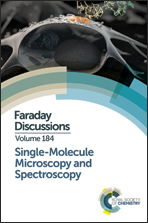Imaging the behavior of molecules in biological systems: breaking the 3D speed barrier with 3D multi-resolution microscopy
Abstract
The overwhelming effort in the development of new microscopy methods has been focused on increasing the spatial and temporal resolution in all three dimensions to enable the measurement of the molecular scale phenomena at the heart of biological processes. However, there exists a significant speed barrier to existing 3D imaging methods, which is associated with the overhead required to image large volumes. This overhead can be overcome to provide nearly unlimited temporal precision by simply focusing on a single molecule or particle via real-time 3D single-particle tracking and the newly developed 3D Multi-resolution Microscopy (3D-MM). Here, we investigate the optical and mechanical limits of real-time 3D single-particle tracking in the context of other methods. In particular, we investigate the use of an optical cantilever for position sensitive detection, finding that this method yields system magnifications of over 3000×. We also investigate the ideal PID control parameters and their effect on the power spectrum of simulated trajectories. Taken together, these data suggest that the speed limit in real-time 3D single particle-tracking is a result of slow piezoelectric stage response as opposed to optical sensitivity or PID control.
- This article is part of the themed collection: Single-Molecule Microscopy and Spectroscopy

 Please wait while we load your content...
Please wait while we load your content...